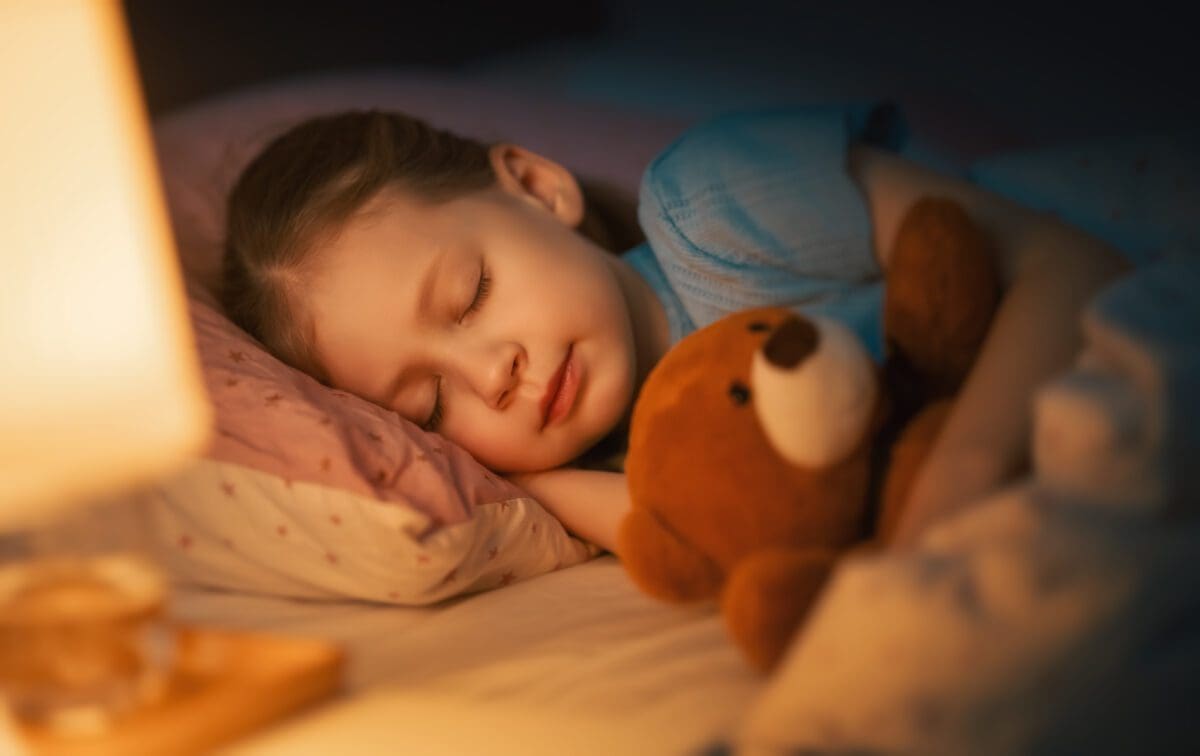If you’re a parent seeking the perfect slumber solution for your little ones, the Hatch Rest noise machine might be your solution. Let’s explore everything you need to know about the best Hatch settings for sleep.
This magical device combines different soothing noises and nightlights, creating a dreamy sleep environment for babies and toddlers alike.
With its several features, however, you might wonder: what are the best Hatch settings for sleep?
In this article, we’ll discuss the science behind noise machines as well as the best Hatch settings for newborns and older kids. So, stick around for all the details!
Before delving into the optimal settings for sleep, let’s first explore how Hatch Rest helps babies and kids fall asleep. This sound machine combines two sound options—white and pink noises—as well as a nightlight, all of which can improve sleep quality.
Let’s take a closer look at the benefits of each in further detail!
Related: A Review of the BabyDeepSleep Weighted Sleep Sack for Babies
For those wondering, white noise refers to sounds with equal frequencies that mask other disturbing audio. Some of the former include ventilation, a hair dryer, and vacuum sounds.
Pink noise, on the other hand, produces low-frequency, deep noises. Steady rain, wind, or beach waves are all examples of pink noise.
Such specific sounds act as a barrier to traffic and other outside noise, providing peaceful sleep. And don’t just take my word for it.
A groundbreaking 1990 study found that white noise creates a serene atmosphere that induces sleep. The study involved forty newborns and found that 80 percent were able to fall asleep after five minutes of hearing white noise.
Another 2012 study found that steady pink noise reduces brain activity and, thus, increases stable sleep.
As you might know, the change in light intensity throughout the day affects the sleep-wake cycle. The suprachiasmatic nuclei (SCN), a brain portion responsible for regulating the circadian rhythm, is synchronized to the 24-hour solar day via a pathway from the retina.
The problem is that artificial lights have significantly impacted our lighting environment. That’s especially true during the evening. As a result, that leads to circadian rhythm sleep-wake disorders (CRSWD).

Luckily, proper use of light can help regulate the circadian rhythm, promoting better sleep quality and overall health.
Hatch Rest offers the perfect solution for this, thanks to its different color options. In the morning, you can set the Hatch Rest to emit intense green light, signaling wakefulness to your child’s brain.
As the day progresses, the light can be gradually dimmed to provide complete darkness or a soothing
While it varies according to age, generally, the American Academy of Pediatrics (AAP) recommends baby noise machines be set at 50 decibels or quieter.
Setting the volume level on the Hatch app to 20% will make most of the sound options between 30-50 decibels. Aside from that, place the noise machine around 7 feet from the baby’s crib. That’s the sweet spot to avoid noise-induced hearing issues.
When it comes to newborn settings, the Hatch Rest’s white noise feature, especially the TV static sound, works wonders for optimal sleep.
As for the nightlights, it’s best to skip them altogether and keep the environment as dark as possible. That’s best for a newborn’s sleep.
However, the red nightlight feature comes in handy if your newborn wakes up in the middle of the night. Its wavelength stimulates the production of melatonin and can induce sleep.
You can continue using the TV static sound for your toddler to promote optimal sleep conditions.
Now, you can also introduce a “wake-up” sound and light to establish a morning routine. You can set the Hatch to turn green and play the soothing “bird’s chirping” sound at their designated wake time.
To make this strategy effective, head into their room as soon as the light turns green and the birds start singing. Celebrate their successful night’s sleep.
After a few repetitions, your little one will make the association. Even young kids catch on quickly to the light and sound strategy, staying calm until their wake-up time arrives.
Keep these settings once your child is at least two years old, as this routine helps create healthy sleep habits and a predictable morning wake-up time.
Certainly! Hatch Rest is suitable for newborns, toddlers, and older kids of all ages. If all your children sleep in the same room, you can use the white noise feature and no lights at night.
If your child wakes up during the night or is afraid of the dark, you can use the

To adjust the brightness of the Hatch Rest’s night light manually, you can use the physical button on the device. By pressing and holding the button, you can increase or decrease the brightness according to your preference.
However, you need to download the Hatch app for programming the sound machine and accessing additional features, such as setting wake-up times and selecting specific sounds.
Yes, the Hatch Rest does have a timer function. With the Hatch app on your smartphone, you can set timers for both the night light and sound machine. This feature allows you to customize when the Hatch Rest turns on and off, making it convenient for establishing sleep routines.
While Hatch Rest can be beneficial, there are some potential disadvantages. For starters, not all babies respond well to it.
White noise machines may also exceed recommended noise limits for babies, posing risks to infant hearing and auditory development.
Additionally, babies can become dependent on those sounds to sleep. That can be a problem, especially when the noise machine isn’t on hand or is broken.
Readers Also Check: BonAmour Sleep System Review: 5 Features You Must Not Miss
Finding the best Hatch settings for sleep is essential for babies and kids. By combining soothing white and pink noises with a gentle nightlight, Hatch Rest creates a serene sleep environment for improved sleep quality.
For newborns, use TV static white noise and a dark sleep environment. On top of that, introduce the green light and bird-chirping wake-up routine for toddlers. That way, you create a soothing sleep haven for your little ones, ensuring they have the best possible sleep experience!